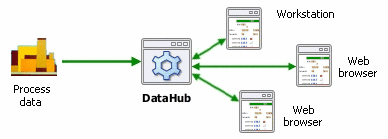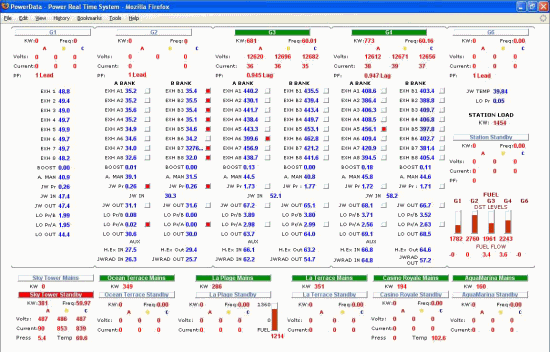Case Study: Excavator Manufacturer, Brazil
Key decision makers gain access to live production data
A heavy equipment manufacturing plant near Sao Paulo, Brazil has been producing excavators, track-type tractors, and other earth-moving equipment for many years. Recently upgraded and expanded, the facility currently employs thousands of people and has an outstanding reputation for high-quality production methods.
Several years ago, in an initiative to keep top decision makers informed of current plant status in real time, company management decided to implement a web-based data visualization system. “We needed a way to quickly view the production status in each of our two plants,” said the plant director, “as well as the machinery common to both facilities. So we put out a request for a pilot project for an effective way to present high-level production figures to our key executives in real time.”
Responding to the request, Exata Sistemas de Automação, Cogent’s distributor for the Brazilian market, developed a solution using the OPC DataHub Web Server. Linking a DataHub instance to the facility’s main OPC server, they then created a web page that would display production data from 5 different machines around the plant to people in production and management offices. The plant engineers were pleased with the results, and were ready to implement the system, but they were faced with an obstacle.
“Although the production manager approved our pilot project, the IT Department has strict regulations on what software is allowed on their system,” explained Murilo Bevilaqua, Director of Exata, “So instead of implementing our solution, the company decided that the best approach would be to add this type of functionality to their existing MES system.”
The company’s technical staff asked their MES vendor to create a solution similar to the Exata pilot project. After several months of attempting to do this, they were not able to achieve the same results. So those responsible for the project returned to Exata and asked them how to best implement the system. More discussion ensued between the technical personnel at the company and the automation experts at Exata to address the security and reliability issues raised by staff in the IT department. Finally, when it was clear that using DataHub software would have no impact on the company’s IIS system or anything else in the IT domain, Exata was given the green light to go ahead.
The long wait actually proved to be beneficial for all parties. In the course of the year, a major upgrade of OPC DataHub software was released, now renamed Cogent DataHub® software. This new version included many new features, including DataHub WebView™ HMI technology. Now it would be much easier for Exata to build web pages, the results would be more attractive and robust, and data in the displays would update instantaneously.
“We used our original ASP-based pilot page as a pattern,” said Bevilaqua, “and quickly created the pages we needed in the DataHub WebView HMI. It was simply a matter of opening a new page, putting in a few labels for the machines, and changing background color for machine status, such as running, stopped, in maintenance, and whether or not it was communicating with the PLC. This was a lot easier to do in the WebView HMI than trying to write a lot of HTML code. We just added a control, set the limits, chose the colors, and then started testing locally and remotely.”
The finished application is accessed remotely from several places around the company, including on a 40″ monitor in the director’s office. It displays 3 different web pages in slide-show mode, changing every 15 seconds, scrolling through production status on various lines. At any location, an operator or a manager can pause on a given page as long as necessary. It is possible to monitor the status from a total of 49 different machines among these three plant areas, with color identification of their current main status, and read more detailed information coming from the PLC.
“We were very pleased with what Exata has done,” said the plant maintenance analyst. “These web pages give us a complete overview of our production at a single glance.”








